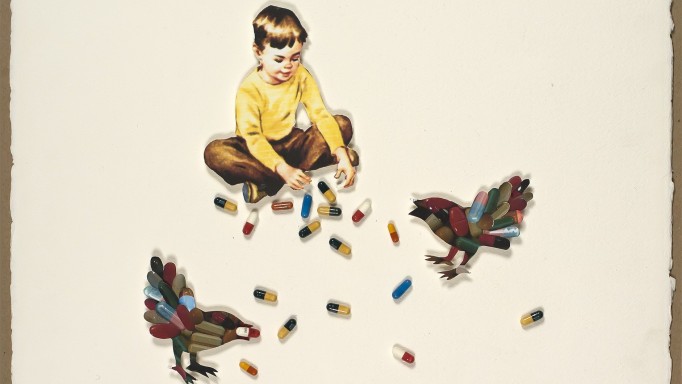In May 2022, an outbreak of mopox—formerly known as monkeypox—began in Europe and North America. As of December 2022, the Centers for Disease Control and Prevention had identified nearly 30,000 cases in the United States and some 83,000 cases worldwide. While cases have declined dramatically from their peak in July and August, mpox still poses a risk for some people, especially those living with HIV.
What is mpox?
Mpox is caused by a virus related to smallpox; both are members of the orthopox virus family. Mpox typically causes a rash with sores that can appear anywhere on the body. Sometimes the skin lesions are accompanied by flu-like symptoms and swollen lymph nodes.
Mpox is not a new disease. It was first discovered in laboratory monkeys in 1958, though its usual animal host is thought to be rodents. The first human case was identified in 1970 in the Democratic Republic of Congo. Before the current outbreak, mpox was mostly seen in Central and West Africa, though cases have periodically been detected elsewhere, mostly among travelers.
How is mpox transmitted?
Traditionally, the monkeypox virus has been transmitted from animals—for example, via bites or handling wild game—and from person to person through close contact. An outbreak in 2013 that involved nearly 50 people in the Midwest was linked to pet prairie dogs.
In contrast, the 2022 outbreak is strongly linked to sex, especially having sex with multiple partners. Transmission may happen via skin-to-skin contact, kissing and respiratory droplets at close range. However, mpox is not airborne like the coronavirus that causes COVID-19. It is not clear whether mpox can be transmitted in semen or vaginal fluid, and there is debate about whether it should be classified as a sexually transmitted infection (STI).
Transmission may also happen through contact with clothing, bed linens, towels or surfaces that have come in contact with fluid from sores, though this does not appear to be a major factor in the current outbreak.
Who is at risk for mpox?
Anyone can potentially get mpox through close personal contact. However, most of those affected in this outbreak have been sexually active gay, bisexual and other men who have sex with men. Some cases in the current outbreak have been linked to household contact. Mother-to-child transmission can occur during pregnancy, delivery or close contact after birth. Transmission via occupational exposure in health care settings is rare, and there have been no outbreaks in schools or daycare centers.
What are the symptoms of mpox?
Mpox has an incubation period of up to three weeks before symptoms start, and the illness usually lasts two to four weeks. However, people with compromised immunity—including those with untreated HIV—may experience more severe or persistent illness.
The virus often starts with flu-like symptoms, such as fever, fatigue, headache and muscle aches, as well as swollen lymph nodes. Its characteristic feature is a rash that can appear on the face, genitals, palms of the hands, soles of the feet or elsewhere. Some people, especially those who had receptive oral or anal sex, develop painful sores in the throat or rectum and proctitis (rectal inflammation). On the other hand, some people have only one or a few lesions and may not develop accompanying symptoms.
The sores, which may be painful or itchy, typically start out as flat red spots and progress to firm, raised lesions that fill with highly infectious clear fluid and then pus. The lesions may resemble those of common STIs, chickenpox or other skin conditions, which can make diagnosis difficult. Mpox is diagnosed by testing a sample of fluid collected from a lesion. Some people have simultaneously tested positive for HIV and other STIs in addition to mpox.
How severe is mpox?
Most people with mpox recover without treatment. But the sores can leave scars, and people with more severe disease may develop complications, including bacterial superinfection of the lesions, sepsis (blood infection), pneumonia, encephalitis (brain inflammation) and vision loss due to lesions in the eyes.
Severe outcomes are more common among children, pregnant people and immunocompromised people. People on antiretroviral treatment with well-controlled HIV do not appear to be at greater risk, but those with untreated HIV, unsuppressed viral load or a low CD4 count may have worse outcomes.
There are two main monkeypox virus strains in Africa, one of which has a fatality rate of around 10% and the other around 1%. The milder form is circulating elsewhere in the world in this outbreak, and mortality is lower than previously reported in Africa.
How is mpox treated?
People with mild to moderate mpox symptoms usually do not need treatment beyond supportive care, such as bed rest, over-the-counter medications and keeping lesions clean. Some people may need stronger pain management. For more severe cases, antiviral medications used to treat smallpox can also be used for mpox, including tecovirimat (TPOXX), cidofovir (Vistide) and brincidofovir (Tembexa). Vaccinia immune globulin (smallpox antibodies) is another option.
TPOXX has not been well studied in people living with HIV. However, it does not have known drug interactions with antiretrovirals that would limit its use in HIV-positive people on treatment or HIV-negative people on PrEP. Some experts recommend that people with HIV should be considered for earlier mpox treatment because they are prone to more severe disease. Starting and staying on effective antiretroviral treatment and maintaining an undetectable HIV viral load is one of the best ways to reduce the risk of severe mpox.
Is there a vaccine for mpox?
Because the viruses are related, smallpox vaccination can prevent mpox as well. In fact, cases have risen in recent decades as routine vaccination was discontinued after smallpox was eradicated in 1980. In the United States, routine smallpox vaccination was halted in 1972, meaning most people around age 50 or older have been vaccinated. Protection appears to be long-lasting, though immunity may wane over time.
In 2019, the Food and Drug Administration approved a safe, nonreplicating smallpox and mpox vaccine known as MVA-BN; brand names include Jynneos, Imvanex and Imvamune. It has been tested and shown to be safe for people living with HIV. An older live virus vaccine known as ACAM2000 can cause serious side effects, especially in people with compromised immunity or skin conditions, and it is not considered safe for people with HIV.
The original Jynneos regimen consisted of two doses administered by subcutaneous injection four weeks apart. However, in an effort to stretch limited vaccine supplies, some countries have adopted a dose-sparing intradermal method in which one-fifth of the original dose is administered under the top layer of skin. With either method, two doses are needed for full protection, which is reached around two weeks after the second dose.
Mpox can be contained through so-called ring vaccination, or targeted vaccination of close contacts of an infected person. Because the monkeypox virus has a long incubation period, the vaccine can be administered up to two weeks after exposure, though it works best if given within four days; this is known as post-postexposure prophylaxis. For broader protection, people at risk, such as those with multiple sex partners, can receive the vaccine in advance; this is known as pre-exposure prophylaxis. Experts do not recommend vaccination for the general population.
How else can mpox be prevented?
Health officials advise that people with mpox should isolate for three weeks, though some think avoiding all close contact is adequate. Sex partners and household members are at greatest risk. Mpox is infectious until the sores heal completely and scabs fall off. Many experts think transmission happens mainly when people are symptomatic, but research is ongoing.
To reduce the risk of transmission, cover sores with clothing or bandages. Because the monkeypox virus may be transmitted through respiratory droplets during face-to-face contact, cover coughs and sneezes; wearing a well-fitted mask can help prevent transmission to close contacts. Health care workers caring for people with mpox should use standard infection control precautions.
Don’t share sex toys or personal items such as toothbrushes. Avoid sharing clothes, bed linens or towels, and wash them in hot water. Disinfect surfaces that come in contact with fluid from mpox sores. It is not yet known whether mpox is transmitted in semen, but condoms may prevent transmission via contact with sores on the genitals or in the rectum.
People with sores or other mpox symptoms should refrain from sex and other close contact, get tested and seek medical care if symptoms are severe or prolonged. Those who think they might have been exposed to mpox should self-monitor for symptoms for three weeks.
See these resources for more information:
CDC: Social Gatherings, Safer Sex and Monkeypox
CDC: Mpox and HIV
World Health Organization: Monkeypox
Last Reviewed: December 21, 2022














